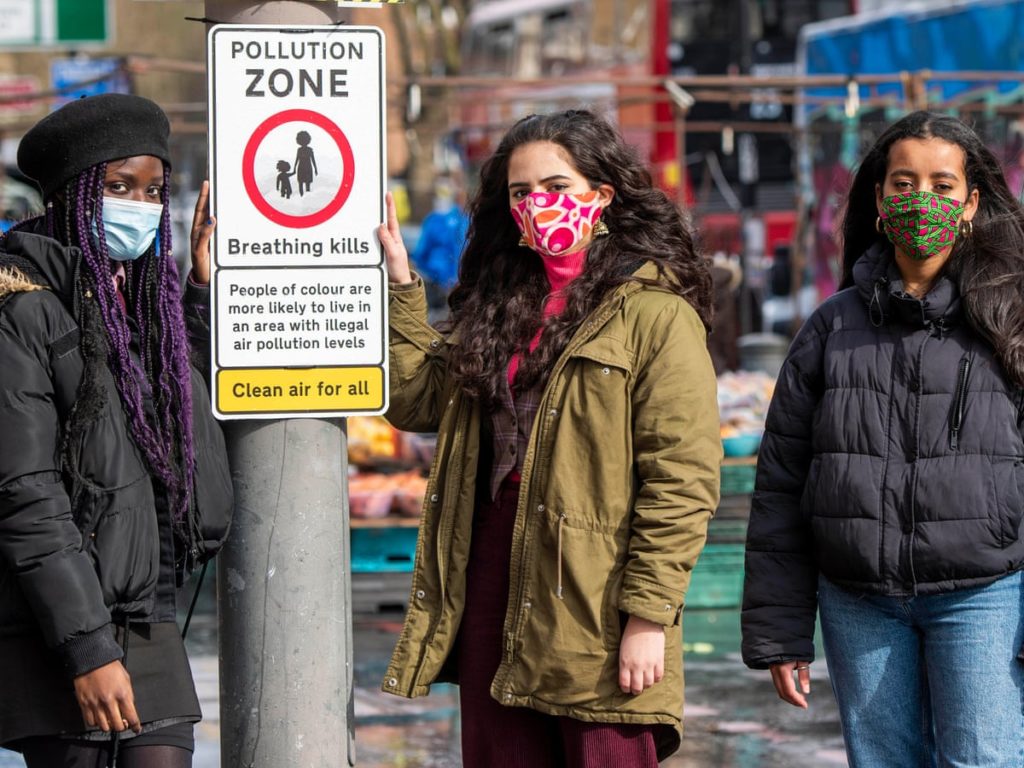Tackling Air Pollution Inequities With a Powerful Lungs Installation
June 17, 2021
Sadly, London has always had a poor relationship with clean air. Since the 17th century, Londoners have battled with high levels of noxious gas — whether through excessive burning of sea-coal or proliferation of the gas guzzling motor vehicle, which contributed to the Great Smog of 1952.
Fast forward to January 2021 and air pollution levels were again on the rise, after the hiatus of 2020, and ambition to tackle this public health crisis was placed on the back-burner as COVID-19 economic recovery took centre stage.

Teaming up with the Environmental Defense Fund Europe (EDFE), Purpose worked to increase the measures tackling air pollution during the 2021 London Mayoral election. With three key policies designed to improve air quality in the city, we were tasked with including these in the manifestos of the four major parties (Labour, Conservative, Green & Liberal Democrats). The three policies were commitment to ULEZ expansion, a review of the Transport for London (TfL) Red Route network and electrification of the TFL bus fleet by 2030. As well as the above policies, we wanted each party to include an important framing of the air pollution crisis in their manifestos: a recognition that air pollution disproportionately impacts deprived communities and communities of colour.
The first task was to understand where we would have the greatest influence on these mayoral candidates and their parties. In short, how did we get them to listen to concerns around air pollution when they were mainly focused on the global pandemic?
To create momentum around the issue, we focused our research around key political voting locations to ascertain which areas the parties may focus their attention on in the run up to the election. We used historical electoral and the latest polling data to pinpoint a number of seats that were either marginal seats or strongholds, as well as seats that were contested by at least two of the four major parties. This narrowed our focus to a number of high profile and politically important areas of London. Then we overlaid that data set with the latest air quality and pollution data particularly focusing on areas of high PM2.5 and PM10 (particulate matter) or areas with high variation of these toxic air particles. This allowed us to see the pollution hotspots in the aforementioned politically contested seats. Finally, we used data that showed high health inequality deprivation and social stressors to further understand the inequities that air pollution was placing Londoners of colour under.
Using all the above data points, we were able to identify three areas of London that had high variances of toxic air, were politically and electorally important, indexed strongly for health deprivation and were covered by the three main policies we wanted the parties to carry in the upcoming election. They were Whitechapel, Putney High Street and Kingston Town Centre Bus Station.
With the locations identified, our job was to expose London’s local air pollution inequity and contribute to the movement around cleaner air for all. Using a combination of insider advocacy and public mobilisation, we partnered with a number of air pollution activists to communicate the need for urgent action to clean London’s air. Partnering with Choked Up, Mums for Lungs and Medact, the campaign had a triumvirate of powerful, outspoken voices representing key constituencies across London speaking up for equitable clean air solutions.

In order to expose London’s local air pollution inequity, we ran a series of activations in the designated locations. Highlighting the need for an Ultra Low Emissions Zone on Putney High Street we placed a 3D billboard with fabric lungs that captured the surrounding toxic air; a fabric which changed from bright white to dark grey in the space of three weeks due to the dirty air. In Whitechapel using Choked Up’s innovative design we positioned mock highway code road signs that exposed the sad truth that air pollution disproportionately impacted deprived communities and communities of colour.
These lungs in Putney, London went grey in less than three weeks. They're made from fabric able to capture particulate matter, turning them from white to grey.
Purpose Climate Lab partnered with @ChokedUp_UK & @MumsForLungs to show how dirty London’s air truly is: pic.twitter.com/xt4hmYihgT
— Purpose (@Purpose) April 27, 2021
In Kingston outside the bus centre, using Banksy style chalk graffiti, we deployed a macabre take on children’s nursery rhymes to emphasise the importance of electrifying the bus network. Bilaterally as part of the insider advocacy work conversations were had with key stakeholders in each of the parties, including important think tanks, policy advisors, press outlets and environment pressure groups.

Toxic air is incredibly harmful to young people. It worsens underlying health conditions and affects development. Kids in Kingston are going to hospital for asthma at rates 47% above the England average. This is not right.
We need a #Mayor4CleanAir to make our buses electric. pic.twitter.com/gyQQ5VJPlQ
— Choked Up (@ChokedUp_UK) March 17, 2021
The use of top down advocacy and bottom up public mobilisation campaigning helped to increase the need for drastic measures to tackle air pollution. After a three week high-intensity campaign, we saw phenomenal impact evidenced in the manifestos. Both the Greens and Liberal Democrats included all three policies as well as acknowledgement of air pollution inequity, while Labour committed to the electrification of the bus network and the ULEZ expansion.
for Equity & Evidence